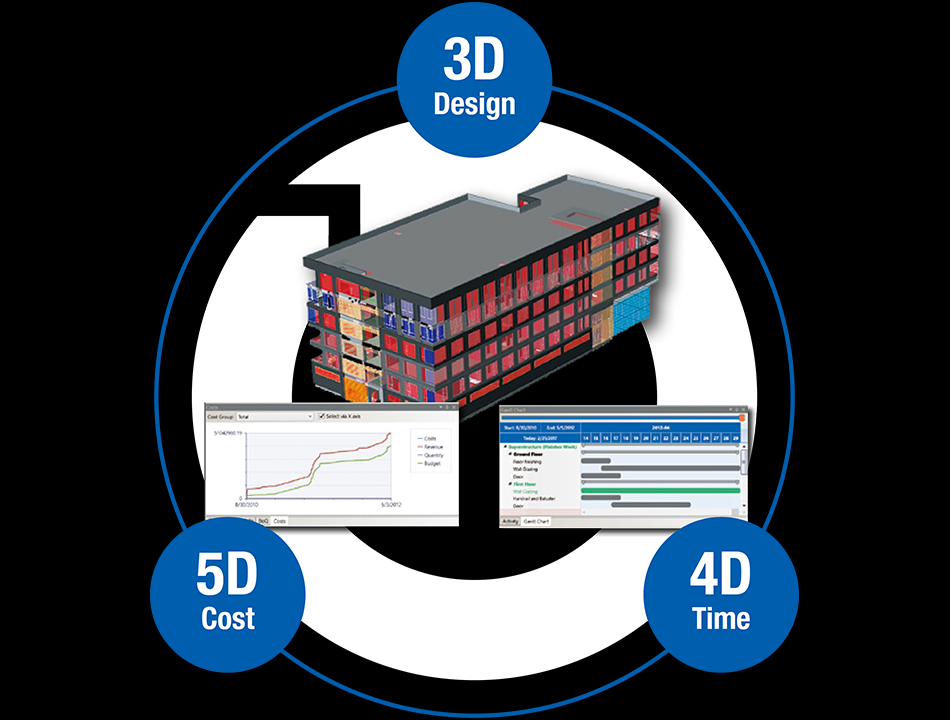
Building Information Modeling (BIM) has become one of the key enablers of digital transformation in today’s engineering industry. BIM is not merely a 3D model but a comprehensive digital representation of a facility’s physical and functional characteristics throughout its lifecycle. In this approach, a project evolves from a collection of drawings into an intelligent data system shared by all disciplines.
According to ISO 19650-1:2018, BIM is defined as “the organization and digitization of information about buildings and civil engineering works throughout their lifecycle.” This standard clarifies that BIM is not only about modeling geometry—it is about managing structured, reliable, and reusable information.
The power of BIM lies in integration. Architecture, structure, mechanical, electrical, and plumbing systems coexist within a single federated model. Each element holds real attributes: a duct’s air flow, a pump’s capacity, a wall’s thermal resistance, or a diffuser’s pressure drop.
BIM’s multi-dimensional structure adds intelligence to projects:
3D represents geometry, 4D adds time, 5D links cost, 6D connects sustainability, and 7D extends to facility management. Through these dimensions, projects can be simulated long before construction begins—saving time, reducing errors, and increasing predictability.
Standards play a central role in BIM adoption. The ISO 19650 series defines how information requirements (EIR), model delivery plans (MIDP), and common data environments (CDE) should be structured. The BS EN 17412-1:2020 standard introduces the “Level of Information Need,” ensuring models contain the right data at each project stage. For interoperability, IFC (Industry Foundation Classes)—standardized as TS EN ISO 16739-1—provides a neutral data exchange format across software platforms.
In Turkey, BIM implementation follows the TS EN ISO 19650 series, complemented by the National BIM Guide published by the Ministry of Environment, Urbanization and Climate Change. This document aligns national practice with international principles and sets information management expectations for public projects.
In MEP coordination, BIM delivers measurable benefits. When a mechanical engineer places ducts, the electrical designer instantly sees cable trays in the same model, preventing spatial conflicts before construction. This collaboration occurs within a Common Data Environment, supported by tools like Autodesk Construction Cloud or Trimble Connect.
Energy modeling and sustainability also rely on BIM. Simulations in compliance with ASHRAE 90.1 and EN ISO 52016-1 enable precise assessment of energy demand, cooling loads, and carbon emissions—well before physical implementation.
Beyond technology, BIM represents a cultural transformation. It encourages transparency, accountability, and continuous collaboration among stakeholders. Successful BIM adoption depends on aligning people and processes as much as on choosing the right tools.
In Turkey, BIM maturity is increasing rapidly. Major infrastructure and healthcare projects now mandate BIM, reflecting a nationwide commitment to digital transformation. Specialized engineering firms such as ARKATUN MÜHENDİSLİK leverage BIM not just for modeling but for end-to-end information management, integrating design, coordination, and lifecycle analytics under a single framework.
The next stage of BIM is the Digital Twin. Real-time sensor data from buildings will synchronize with BIM models to monitor energy performance, predictive maintenance, and operational efficiency. This convergence marks the dawn of smart infrastructure management.
Ultimately, BIM has become the new language of engineering. It reduces errors, enhances communication, and drives sustainability through data-driven decision-making. In the modern built environment, success is no longer measured by drawings—but by the quality of information behind them. BIM is the foundation of digital transformation and the future of intelligent engineering.